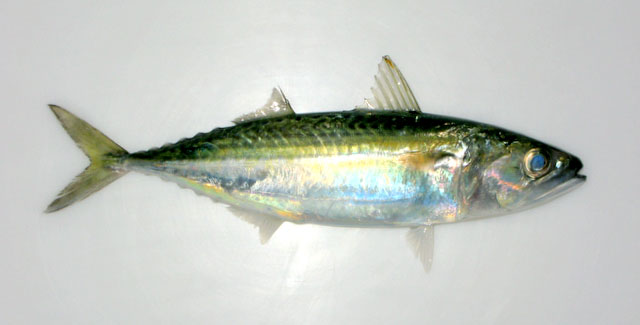| Scombridae (Mackerels, tunas, bonitos), subfamily: Scombrinae |
| 20 cm FL (male/unsexed); max.weight: 750.0 g |
|
pelagic-neritic; marine; depth range 2 - 150 m, oceanodromous |
| Indo-West Pacific: India to Fiji, north to Taiwan. |
|
Dorsal spines (total): 8-11; Dorsal soft rays (total): 12-12; Anal spines: 0-0; Anal soft rays: 12-12; Vertebrae: 31. Head longer than body depth. Maxilla covered by lachrymal bone. Swim bladder present. Interpelvic process small and single. Anal spine rudimentary. Bristles on longest gill raker, 30 to 55 on one side. Gill rakers do not extend far into mouth. A black blotch behind pectoral fin base. The belly is yellowish silver; 2 to 6 large spots are at the base of the first dorsal fin; tow faint stripes are at the level of the lateral line in some specimens. |
| Epipelagic, neritic species, occurring in waters where surface temperatures do not fall below 17°C. Forms schools of equally sized individuals. Feeds on the largest zooplankton organisms, thus complementing the planktonic food spectrum of the other two Rastrelliger species. |
|
Vulnerable (VU); Date assessed: 01 March 2022 (A2bd) Ref. (130435)
|
| harmless |
Source and more info: www.fishbase.org. For personal, classroom, and other internal use only. Not for publication.

